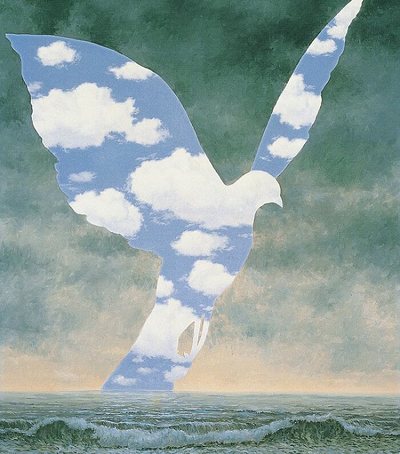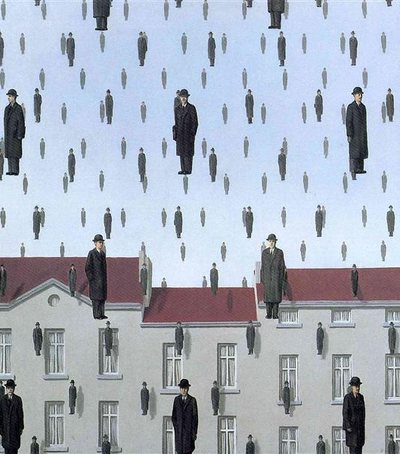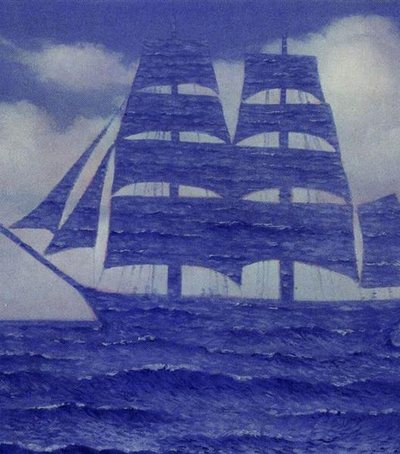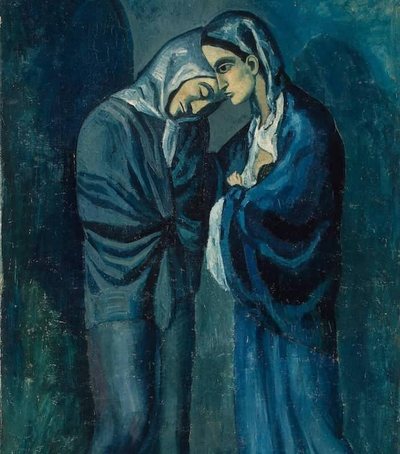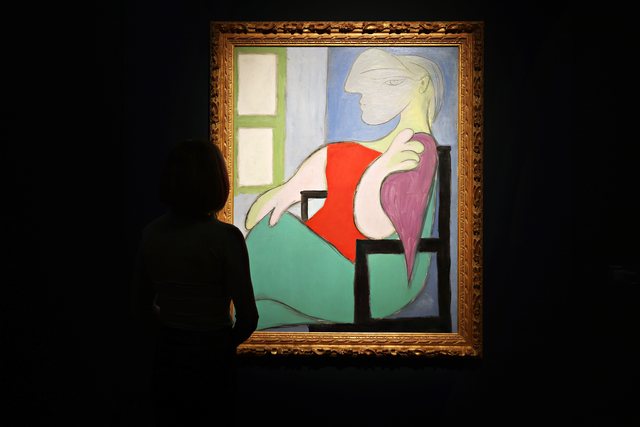
Painted on October 30, 1932, “Woman Seated at the Window” is one of the grandest and final portraits in a series of euphoric masterpieces that characterized this key year in Picasso’s career. By this point, Marie-Thérèse Walter, his muse, had grown in intensity and influence in every aspect of his art. In this portrait—one of the most majestic and impressive Picasso ever painted of her—she rises to an almost divine status: an idolized muse who reigns over the artist and his creative world.
In monumental proportions, Marie-Thérèse fills the entire canvas, pushed to the limits of the painting’s surface. Her presence dominates not only the illuminated setting of the composition, but also the viewer’s own space. She is no longer flesh and blood – Picasso presents her as a winged goddess, a modern Nike, illuminated and alive. Framed by a sky-blue panel, her head is lunar, luminous and sculptural, as if carved from marble, while her body – sensitive, soft and sensual – consists of arched planes orbiting her fiery red torso.
Marie-Thérèse's youthful beauty and impressive stature inspired a new pictorial vocabulary in Picasso's work, a language of forms that helped him explore her body in a dual way – both in two dimensions and in three.
We immediately think of the plaster bust of 1931, where her profile – immediately recognizable – has a pronounced sculptural quality. Her contours are outlined with a single line, sharp and sure, as if Picasso’s own fingerprints were gently gliding over the beloved silhouette of her profile.
This vision of her – a pure visual iconography – would become the central motif of Picasso's art throughout the 1930s, turning Marie-Thérèse into not only a muse, but the archetypal being of love and inspiration in his creative life.
Photo Credit: Cindy Ord / Staff
Source: Getty Images North America

